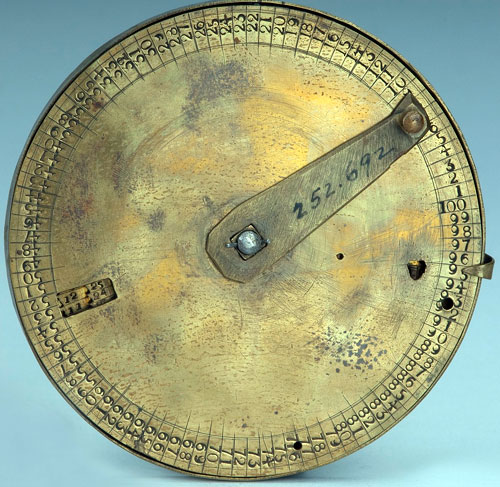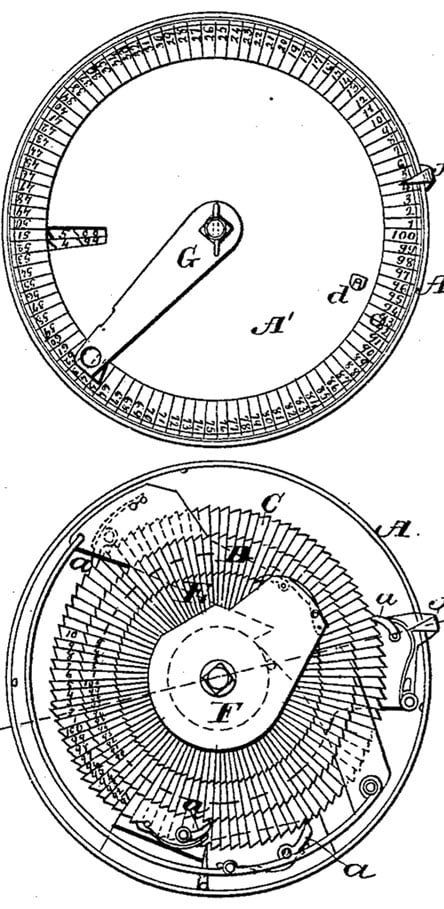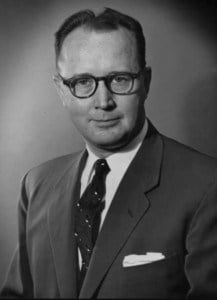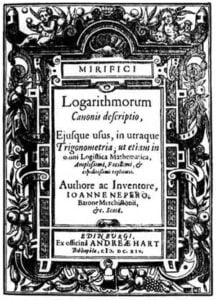Today, if we want to add some figures, we’re more likely to use the calculator app on our phones than a pencil and paper. But there wasn’t always “an app for that.”
The abacus was an ancient counting tool that is most often associated with the Chinese and dated back to the second century BCE. But counting boards actually date back to the fourth century BCE and were found in Rome.
The first mechanical calculator was invented by Blaise Pascal in 1642. Since then, until the advent of the all-electric desktop calculator in 1961, the British Bell Punch/Sumlock Comptometer ANITA, humans created a wide variety of mechanical calculators. Some were general purpose, designed to do addition, subtraction, multiplication, and division, while others, like George Farmer’s tallying instrument, were designed to perform functions that were specific to a particular industry.
George Farmer
In 1867, George Farmer of Flint, Michigan, patented a tallying instrument (US patent 69647). The patent model of the device (up to 1880, the US Patent Office required inventors to submit a model with their patent application) is still preserved in the National Museum of American History, Washington, D.C. (see the image below).
The tallying instrument of George Farmer is a circular brass adding device with overall measurements: 1.2 cm x 10.7 cm x 10.7 cm. The case, the dial-plate and wheels are made of metallic sheet metal.

According to the patent US69647 (see the patent drawing below), the invention relates to a new and improved method of registering or tallying the quantity of lumber measured, or keeping account of sums of money paid out or received, and which is adapted to other purposes of a similar nature…
The instrument of George Farmer has three concentric, linked discs that revolve on a central pivot. The bottom disc is numbered from 1 to 99 clockwise around its toothed edge, to represent hundreds and thousands. Above it is a smaller disc, also with teeth around the edge, numbered from 00 to 99 clockwise to represent units and tens. A window in the third, top, largest disc shows the result on the dials below. The largest disc (a dial-plate) is numbered from 1 to 100 around the edge.
Atop the dial-plate is a rotating lever (arm), which traverses the disk, and by which the instrument is operated. Moving the arm counterclockwise advances the inner disc proportionally, allowing the operator to enter numbers up to 99.
Another lever extends from the side of the disc and bends over the top, performing the carry, if needed. If the arm rotates around a full 100 units, it pushes this lever, causing a carry. The lever also may be used to zero the hundreds and thousands digits.

Who Was the Inventor George Farmer?
George Farmer was born in 1830 in England and immigrated into the US in 1850s. He initially established in Illinois (Elmira and Osceola), working as a miller. In Osceola, IL, in 1860 he received a patent for a reaper or harvester (US29685).
In 1860s, he moved to Michigan (Flint and Saginaw), still working as a miller. In 1870s he and his son, Albion, established a shingle-making business in Saginaw, MI, under the name of George Farmer & Son.
George Farmer died of a cerebral hemorrhage on June 24, 1880, in Saginaw, Michigan.
The image featured at the top of this post is ©Unknown author / public domain


